Creating CTA Funnels
What is a CTA Funnel?
If you’re used to more traditional form / lead generation tools, you’re used to:
- Creating a new form
- Designing the form
- Entering in content for the form
- Setting display trigger rules (i.e. show only on the home page)
- Setting submission rules (i.e. add a particular tag to the new contact)
RightMessage is a very different kind of “form tool” (if you can even call us that!) We’ve completely separated “what you’re offered” (like an opt-in form or ad) from “where you see it” (like a popup or sticky bar.)
Our CTA Funnel builder allows you to create sophisticated visitor journeys, where you can ask questions, make routing decisions, and pitch offers – fully backed by our advanced Segmentation Engine. This means that things that would be pretty much impossible with existing form tools are easy with RightMessage (for example, only showing a particular popup if the visitor is both a known contact and tagged as a “Customer”.)
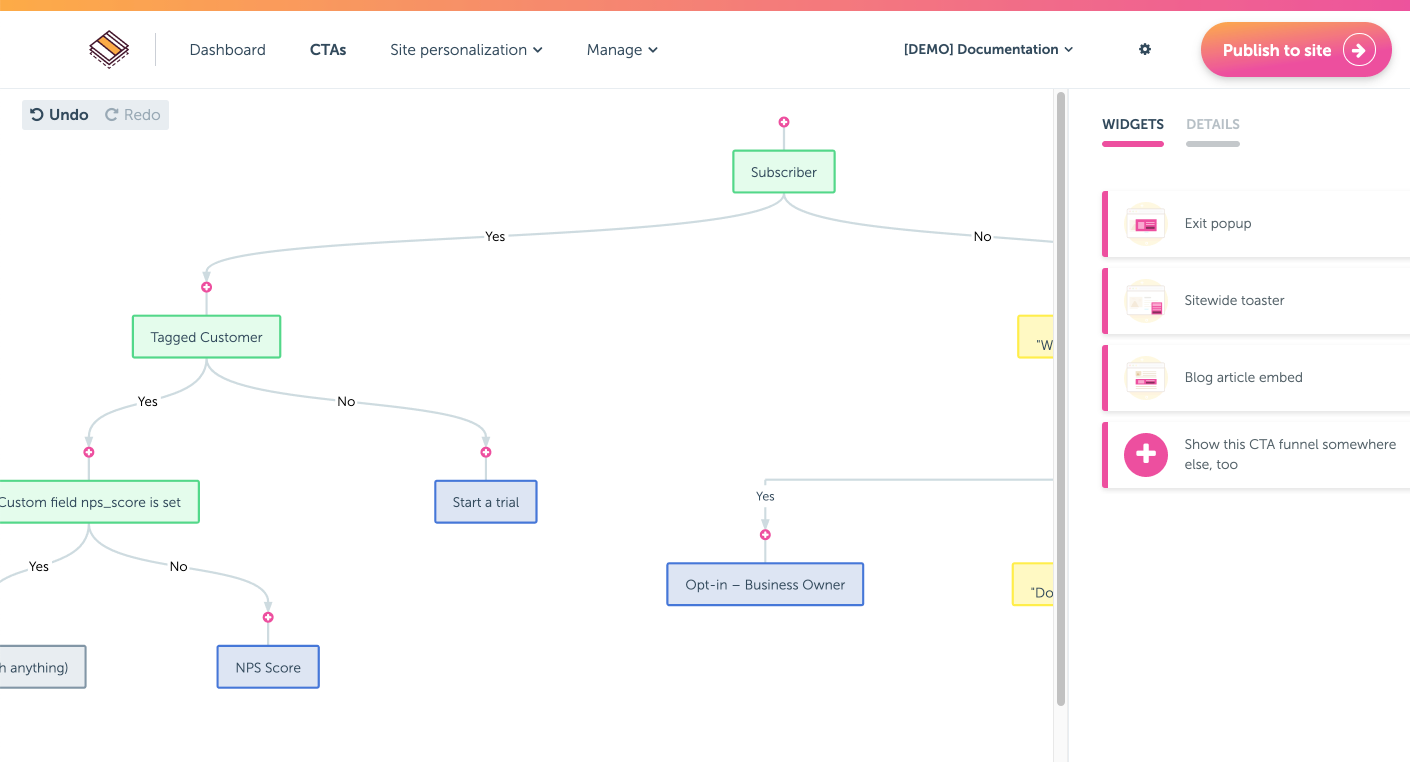
How CTA Funnels work
On every page view, we run every single CTA Funnel you’ve published. Visitors start at the top of each funnel, and work their way down.
If the journey leads to a question we don’t know the answer to yet, RightMessage will populate your funnel’s widgets with a “Choose one-of-many” question selector.
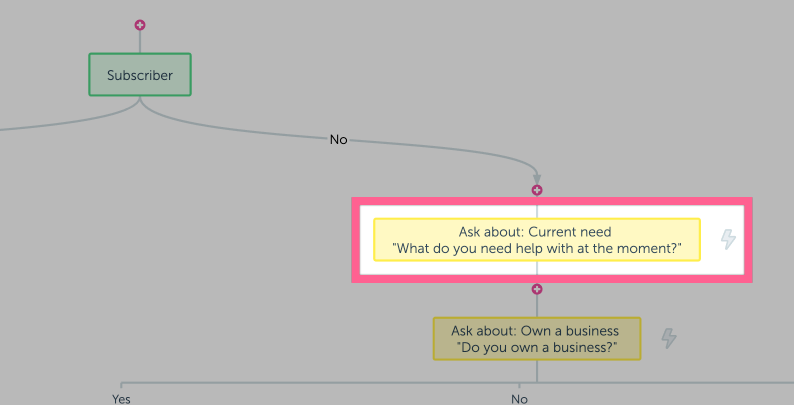
Should the journey lead to an offer, your funnel’s widgets will display a personalized offer, which can either be a lead generation / opt-in form, or a call-to-action that leads someone to a particular page.
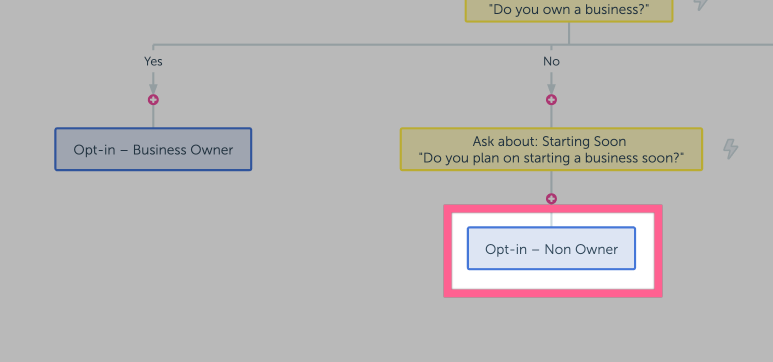
If the journey leads someone to nothing (for example, you have nothing to offer or ask of someone who’s a returning customer), then nothing is shown to the visitor.
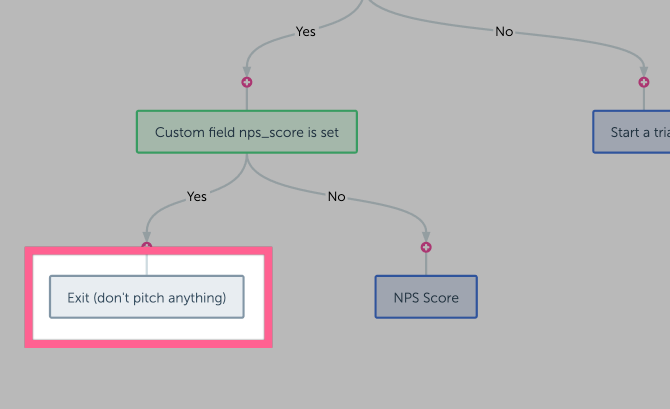
Each funnel has its own set of widgets. Additionally, widgets will never conflict – two exit popups, triggered from two different funnels, can’t show at once. So it’s important to make sure that you intentionally design your funnels to not conflict, otherwise a particular offer or question you’re expecting to show might stay suppressed.
We recommend most customers create a CTA Funnel (titled “Sitewide”) that drives a holistic customer journey across your entire website. For most, this is sufficient. However, sometimes you might want to create a separate funnel to target a particular product sales page (i.e. “Why are you interested in this product?”) – in those cases, just make sure that you’re ensuring your “Sitewide” funnel doesn’t try to offer or ask anything on those pages that have their own funnels.
How to create a new funnel
To create a new CTA Funnel, click on CTAs in the RightMessage navigation. Then click Create a new CTA funnel.
When you create your new funnel, you’ll enter our funnel editor.
On the left is our journey editor, where you’ll be able to map out who gets offered or asked what, and when:
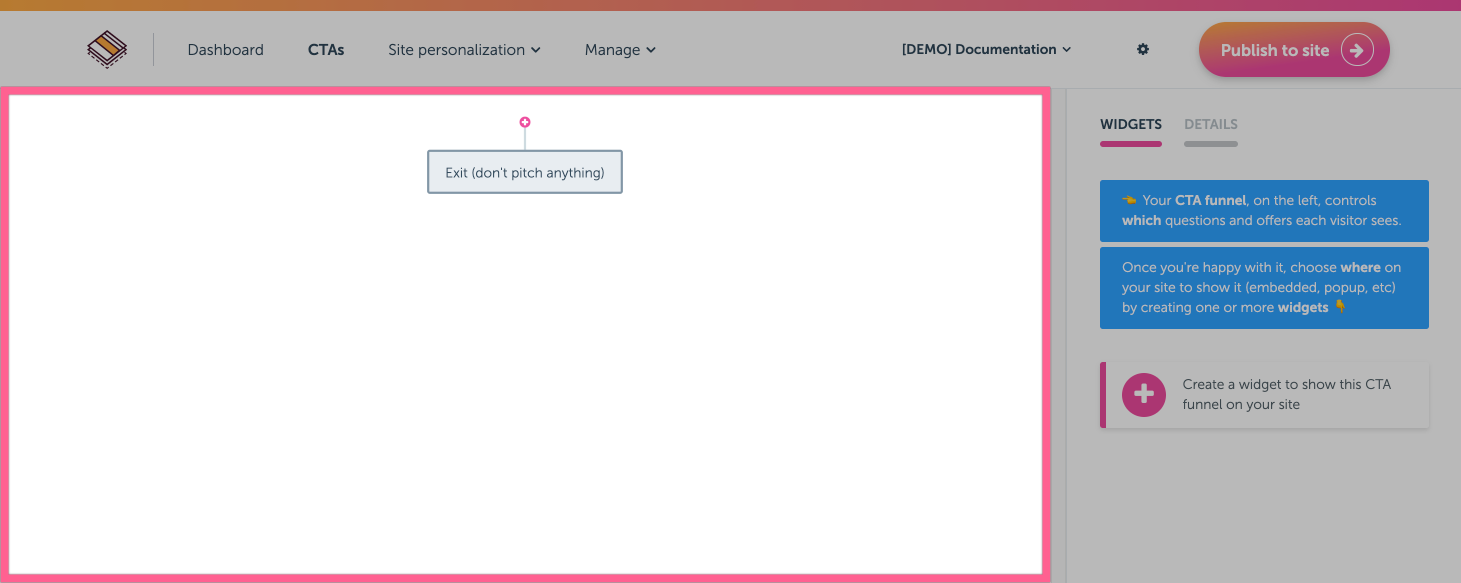
And on the right, you’ll see a list of widgets that have been created for this funnel. Since this is a new CTA Funnel, this list will be blank:
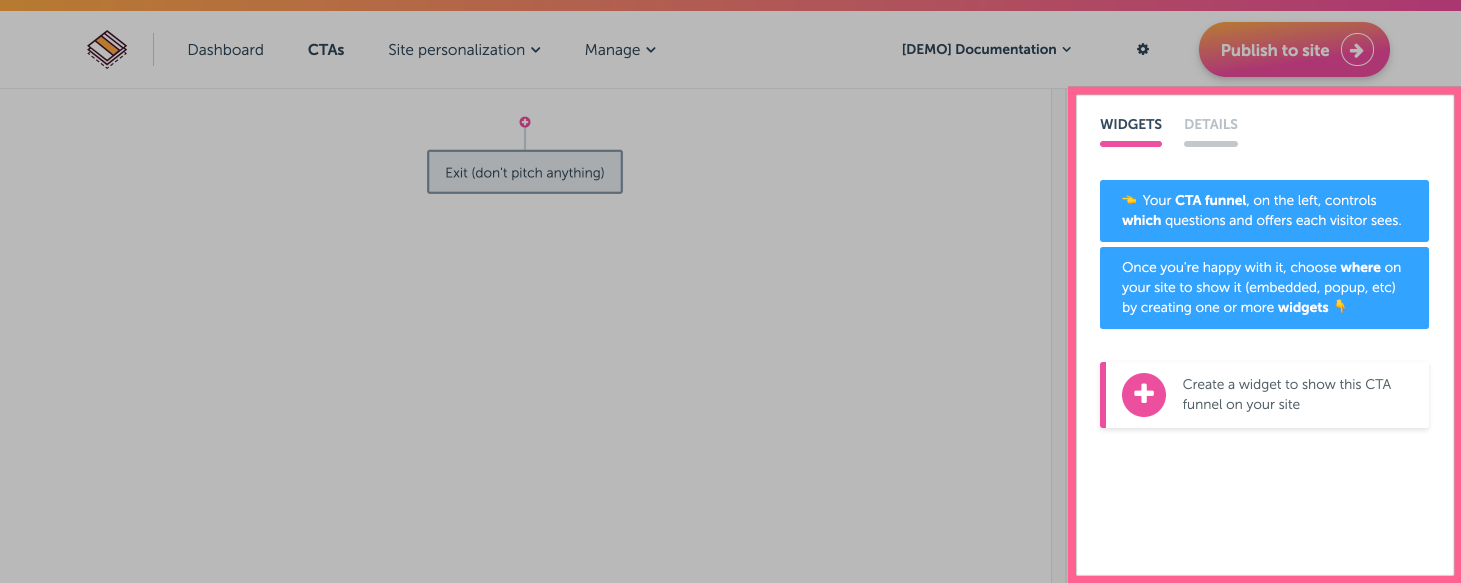
On the “Details” tab (at the top of the widgets list), you can rename or delete this funnel.
Mapping out visitor journeys
In this guide, you'll learn how to map out sophisticated visitor journeys within a RightMessage CTA Funnel.
- About Us
- Contact Sales
- Contact Customer Support
- © RightMessage Inc. 2024
- Privacy Policy
- Terms of Service
